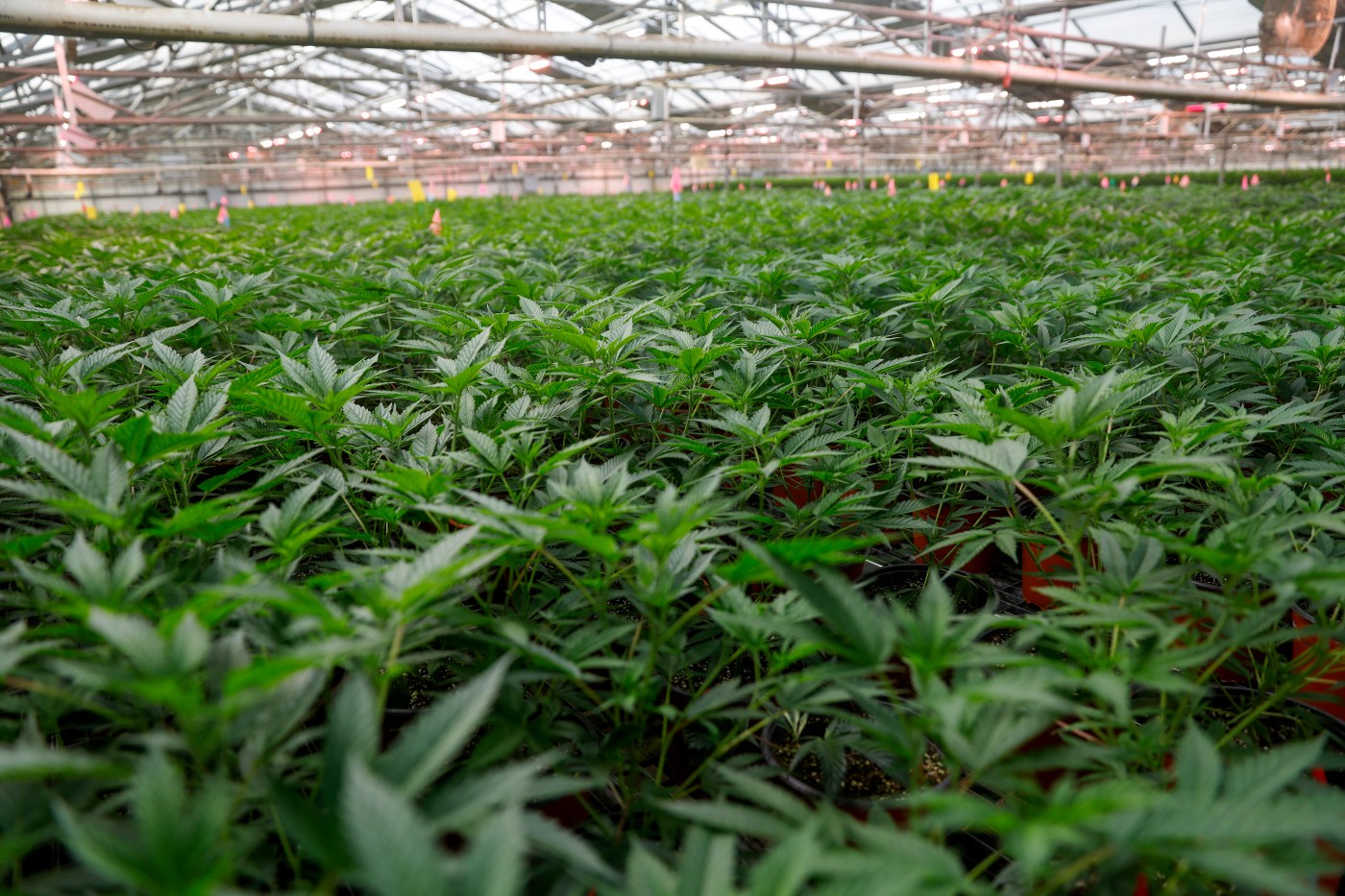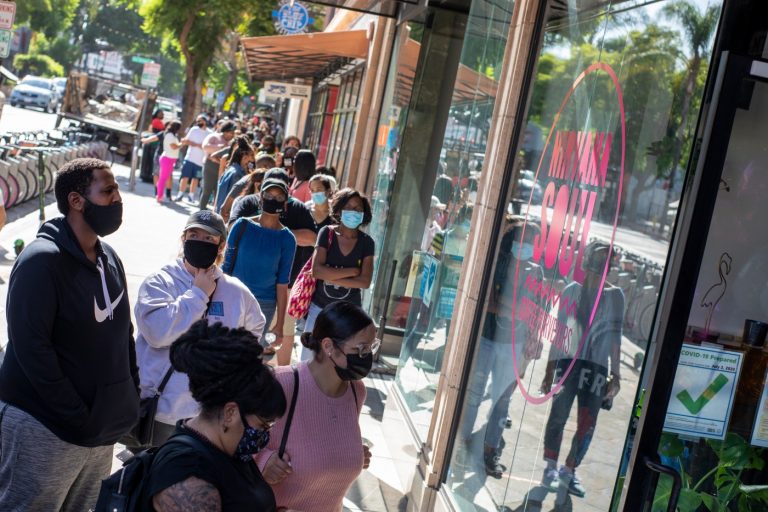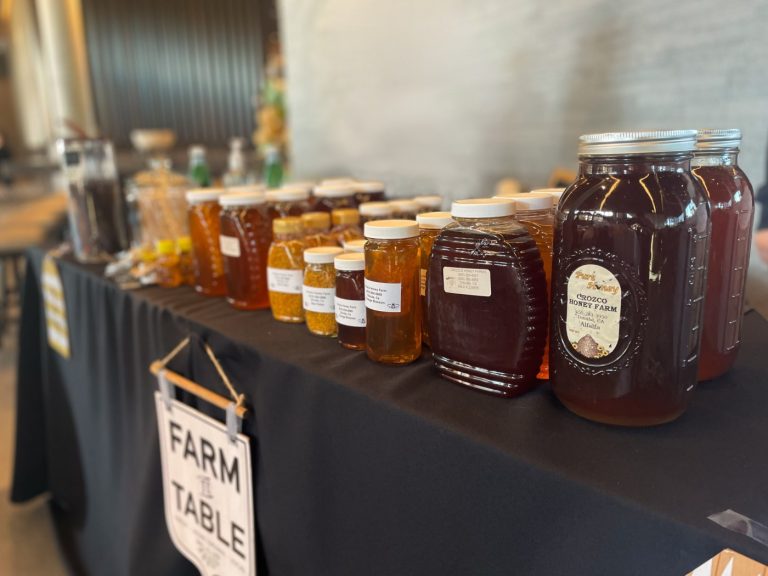Facing price pressures and fierce competition, California’s vast and fragmented marijuana industry is consolidating, ushering in the era of Big Weed.
Legalization was led by colorful and high-flying stoners. But the sober demands of efficiency, capitalization and tight corporate management are driving a wave of mergers and acquisitions.
“It’s a nascent industry that is going through a process of adaptation,” said Wall Street equity analyst Pablo Zuanic of Zuanic & Associates, who specializes in the cannabis sector. “The winners are scaling up.”
The long-outlawed weed business is beginning to now follow the same “consolidation curve” of every other American industry, from airlines to telecommunications. As industries mature, companies fight for market share to outgrow their rivals — or risk extinction.
“The survivors are strong, and getting stronger,” said Laurie Holcomb, CEO of Gold Flora, a vertically integrated “seed to sale” network of cultivators, manufacturers, distributors and dispensaries in California, including San Jose, Vallejo, Oakland, Soquel and San Francisco.
Meanwhile, many small, underfunded or poorly run businesses are becoming buried by debt. Many have vanished.
“California is a case study of a competitive market,” said Zuanic. With no limits on the number of growers or dispensaries under state law, “it’s a ‘free market’ state.”
StateHouse Holdings consists of five greenhouses each housing an acre in Salinas on Monday, Jan. 15, 2024. (Nhat V. Meyer/Bay Area News Group)
So far, no single company seems likely to claim a monopoly in the state. As the nation’s largest legal market, with $5.1 billion in sales in 2023, California has room for multiple winners, said experts. STIIIZY, Catalyst, Gold Flora, StateHouse and Glass House Brands are among the state’s largest companies, but some small and successful specialists, such as Alameda’s Kiva Confections, seem poised to survive as well.
Weed had a homespun start. In the 1960s, grown on forbidden farms and makeshift homesteads, it was shared, bartered or sold among friends. During the worst of the AIDS crisis in the 1980s, San Francisco’s “Brownie Mary” Rathbun and other “dealer-healers” walked the streets, selling goods out of a basket for several dollars each.
Legalization in 2016 launched a “green rush,” with new businesses popping up like seedlings in the spring.
Times were good during the first part of the COVID-19 pandemic, when many Californians received government assistance and worked remotely. Business chased the growth, taking on debt to add employees and expensive overhead.
Supplies surged, but demand stabilized, then declined. Prices have plummeted. Since legalization, the average wholesale price for a pound of California cannabis flower fell $1,600 to $682 in mid-May, according to Cannabis Benchmarks, the nation’s provider of data. Statewide, sales are down 7.1%. All three of the Bay Area counties with the largest retail sales – Alameda, San Francisco, and Santa Clara – showed declining sales.
Meanwhile, taxes are high, and illegal weed is abundant, undercutting the legal market. Earlier this year, officers found 41,218 illegal plants and over 2,900 pounds of processed cannabis, worth nearly $39 million, on San Leandro Street in Oakland, as well as $10 million worth of plants discovered on Kevin Court, also in Oakland.
As a result, the number of legal growers has fallen from 18,000 at its peak to about 4,000. California once had an estimated 6,000 different brands; now, there are 1,600. A major distributor, called HERBL, collapsed last November, shorting the state in unpaid taxes. Former retail empires, like High Times and MedMen, have crumbled.
Companies owe more than $7.7 million in unpaid bills so far this year, according to Adam Cavanaugh, the president of Cannabiz Credit Association, a group that tracks debt and provides credit ratings. While that’s on pace with a $22.43 million in debt in 2023, it’s a significant increase from $15.7 million in 2022.
To survive, the strongest companies are mobilizing — merging, consolidating and streamlining. While they are currently operating in the red, they predict that they’ll have positive cash flow within several years.
This trend can be seen throughout the Bay Area’s cannabis culture.
In downtown Vallejo, the mom-and-pop medicinal pot shop ReLeaf Alternative Healing, founded in 2011, was bought in 2021 by Coastal, which has retail, delivery, manufacturing and distribution licenses across the state. Then Coastal was sold to The Parent Company, which had been created by a three-way merger of Caliva, Left Coast Ventures, and SISU Extracts. Last year, The Parent Company merged with Gold Flora.
Oakland’s Harborside dispensary, founded by activists in 2006, has a long and storied history as a nonprofit patient collective. Now Harborside has retail locations in Oakland, San Jose, San Leandro, San Francisco and Desert Hot Springs. Two years ago, after Harborside’s purchase of manufacturer Sublime, retailer Urbn Leaf and the brand Loudpack, the four companies merged into one, with a name worthy of eye-rolling: StateHouse Holdings.
How does this help? Bigger is better during a boom-and-bust cycle, as long as there’s not too much debt. Size and deep pockets means there’s enough capital to weather a storm.
And companies that go vertical — buying every type of business along the chain — have more reliable supplies. And those companies can provide control over the quality and quantity of their products, said Ed Schmults, CEO of StateHouse Holdings, former COO at Patagonia and CEO at FAO Schwarz, with a degree from Harvard Business School.
Related Articles
DoJ formally moves to reclassify marijuana as less-dangerous drug
Teens on field trip overdose on cannabis edibles at Los Angeles’ La Brea Tar Pits
Dropped cellphone leads to felony charges against four in $54,000 East Bay dispensary burglary, but cops say 13 were involved
2 defendants in slaying of 6 during marijuana buy in California desert to face death penalty
Search for missing Northern California child leads authorities to illegal marijuana grow
“If you buy Black Diamond ski gear, you expect it to be the same quality as it was five years ago. You trust it. That’s the promise of a brand,” he said. And shops are guaranteed that a product will always be on their shelves.
Consolidation means pruning and streamlining, which saves money, said Zuanic.
StateHouse Holdings continues to invest in automation across all their facilities including this one in Greenfield. The automated bagger shown above has helped improve the overall output and standardization of their house cannabis flower brands like “Dime Bag.”(Photo courtesy of StateHouse Holdings)
StateHouse closed two subpar manufacturing plants, but it invested in expansion of a plant in the Salinas Valley town of Greenfield. Gold Flora cut some brands and is better “segmenting” existing brands to target a specific market — 25 to 35-year-old daily vape users, for instance.
Large companies have easier access to capital to invest in equipment, training, software and other tools – which also creates savings, due to improved efficiency.
StateHouse no longer hires legions of people of roll joints, instead using “machinery that is super precise. It creates a consistent product, and saves hundreds of thousands of dollars over the course of a year,” said Schmults.
But it also means painful job losses in an industry that was once one of the fastest-growing sources of employment. Post-merger, StateHouse laid off about 500 of 900 employees. After The Parent Company was acquired by Gold Flora, 120 jobs were cut, including “budtenders” at Caliva’s San Jose pot shop.
Consolidation may provide more clout in negotiations with government officials. This worries critics, who warn that companies could use their big marketing budgets and gifted creative teams to boost the popularity of cannabis use.
If federal restrictions on marijuana are lifted, as expected, will the rest of the nation follow California’s competitive model — or will it follow the example of some eastern states, which restrict the number of licenses?
“Watching California,” said Zuanic, “helps us understand what works, and what doesn’t work.”












